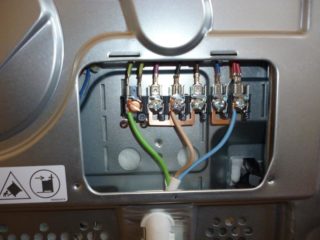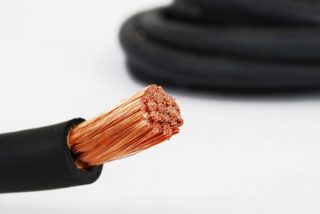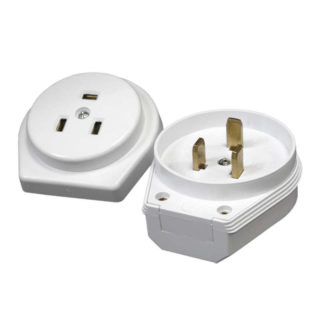Connecting an electric stove to a 220V outlet is a laborious process that requires the participation of a professional. If it is not possible to contact a specialist, you need to work carefully, observing safety rules and instructions.
Wiring requirements

One of the most important conditions for the operation of an electric stove when connected is the ability to withstand significant wiring loads.
In the living quarters in which the electric stove is installed, it is necessary to have copper stranded wiring, the cross-section of which will be at least 4 mm2. At the same time, if the power of the oven is higher than usual (reaches 2000 watts), the wire cross-section should be from 6 mm2. Experts recommend laying a separate wiring for power supply so that the house does not suffer from overloading of electricity.
The switchboard circuit breaker must withstand the loads of the electric stove. The wiring must, in terms of its possible power, exceed that required by the device by at least one rating. The best solution is to install an additional switchboard that will power the oven. For example, if the stove consumes a current of 20 A, the power of the machine must be 25 A.
It will not be superfluous to install additional protective equipment. These include disconnecting devices, differential circuit breakers.
The plug and socket must be powered. So they can work with heavy loads.
Grounding is carried out to the shield. A terminal block should be used with a high power device.
Security measures

To connect an electric stove, you need to follow certain safety measures during work. Socket with plug, wiring or terminal block are matched to each other. The current required for the plate should not exceed that possible for the shield.
The most important safety measure is the selection of the wiring cable, the cross-section of which will be large enough to carry current.
Protective equipment must be used.
The current strength of the residual current device, as well as that of the stove, should not exceed the rating of the shield.
When connecting parts, you need to make sure that they are all securely connected. There should be no loose bolts or screws. This is unacceptable when connecting an electric stove. It is also necessary to ensure that the RCD, the wiring, the socket and the machine are connected correctly.
Electric stove connection diagrams
Single phase connection
In apartments of multi-storey buildings, this type of connecting the stove to the outlet is most often found. Terminals 1-5 must be connected with copper jumpers with a cross-section of 6 mm2. Usually, when buying new models, jumpers are already included in the kit. A phase conductor is connected to terminal number 1, 2 or 3. A zero core is connected to 4 or 5. After that, the ground wire is connected to value 6.
Each bolt is tightened to the stop. If the parts are not screwed in properly, there could be a fire.
Two-phase connection
An oven connection diagram in a two-phase electric stove is rare. It can have two phases - A and C, and phase B will be absent.
In such a situation, it is necessary to connect terminals 1 and 2 with a jumper. Phase A is connected through the jumper. Phase C goes to the third terminal. After that, the connection procedure is absolutely the same as in the single-phase circuit.
Three-phase connection
Three-phase power supply is connected most often in private houses. The wire consists of 4-5 cores. The voltage between the phases is in this case 380 volts, and between zero and phases - 220 volts.
In a three-phase connection, the algorithm is as follows: the corresponding phases A-C go to terminals 1-3, then terminals 4-6 are connected according to the single-phase connection algorithm.
Connection type

Before installation, determine the required type of connection. Depending on where the electric stoves are connected, choose one of the following options:
- direct connection.
- using a terminal box.
- through the outlet.
Each of them has its own distinctive features.
Direct inclusion
The direct connection option is suitable when you do not need to disconnect the stove from the general network. This is the safest way. With it, the risk of overheating is minimized as much as possible, since there are no additional connections.
If a separate disconnection is required, a socket or terminal box must be installed.
How to install the terminal box
A terminal box is needed when connecting a modern stove to the network without plugging it into an outlet. In this case, a block in an installation box is used, mounted on the wall from the outside, or a metal box for hidden installation. It is placed, observing a distance of 2 meters from the electric stove. However, the height should not exceed 0.6 meters from the floor.
When installing, you must turn off the electricity. Then follow the scheme:
- Mark the attachment points with a simple pencil.
- The box is fixed to a concrete wall using dowels.
- The ends of the gaskets are cut off so that the wires can then be inserted.
- Wire connection: zero to zero, phase to phase and earth to earth.
- The joints are insulated with PVC insulation.
Connecting without an outlet is not much different from this method.
Switching on through the socket
This is a common option for connecting to the network, here the use of grounding is mandatory. A three-phase socket can be used.
First you need to connect the wire to the machine. After that, the phase and neutral wires are connected. Further, the ground is connected to the grounding of the apartment or house. A wire is pulled to the installation site of the outlet. It is necessary to carefully connect the wires so as not to confuse them.
The socket is fixed on the wall away from metal structures, and the power cable is connected to the plate along with the plug.
How to connect an electric stove to a 220 V network

To connect to a 220 volt network, you need to use three-pin power sockets, a three-core cable, a plug with a rated current that is more than 32 amperes.
The cable is first connected to the plate. It is safest to pre-compress the conductors with the contact plates.
After the steps taken, the plug is connected to the cable. It is necessary to unscrew the fastening screws (there are two of them), and then remove the cover together with the contacts. The fixing bar is also removable.
The protective insulation is removed from the edge of the flexible cable (by 5-6 cm), and the conductors are straightened. Next, the ends are cleaned from insulation (up to 2 cm). After stripping, the cable is inserted into the plug body.
To determine the phase in the outlet, take a voltage indicator. Install in the place where the expected phase is located and look at the LED. If it lights up, then there is voltage, therefore, this is a phase.









